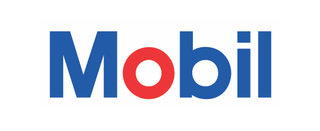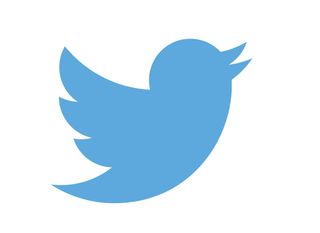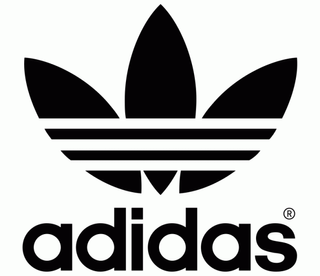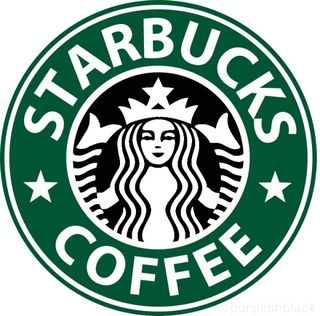6 Types Of Logos
Mayer Digital Agency believes there are 6 types of logos.
In creating this article to help clients we ultimately paraphrased two articles. These articles are referenced at the bottom of the page. They seem to think there are either 5 or 7. The information they provide is helpful and informative and sound and mostly accurate in regards to the defining characteristics of different logos.
Please use this information and these articles to help you in deciding upon the type of Logo you would like designed. Being certain before we start can save time and money and ultimately result in a better design.
Not sure where to start with your logo design? Maybe you should begin by deciding what style of logo it’s going to be.
Logo styles can be divided into six basic categories: wordmarks, lettermarks, brandmarks, combination marks, emblems and mascots. In this post, we explain how each of them is defined, give some famous examples, and explain when and why you should use them.
(Note: We do not feel there is an Abstract Logo Mark category and each of such a logo can easily be included in one of the other categories. We do feel there are Mascot logos that just can't be seen as Emblems or Brandmarks.)
01. Wordmark

A wordmark – also known as word mark or logotype or type cast – is ia very simple clean logo when a Company is name focused and wanting sleek classy easy to read messages. This results in casting the company’s name in text alone. They may be based on handwriting, signatures, custom fonts or (less common) existing fonts.
Famous examples include the logos for Coca-Cola, Disney, Mobil, Canon, Sony, Visa, Google, Facebook, Yahoo and Pinterest.
For big brands, the simplicity of a wordmark logo can convey a sense of confidence, history and stability. However, the wordmark can also be a good choice for a startup, as it contains the company's full name and helps to make it known.
We often prefer to, depending on the Company Name and initials, include or sketch a Lettermark Logo to complement the Wordmark. While we will instruct a client to focus on one main branding, it never hurts to have peripheral logos and various alternatives. This will help in the long-term by providing strong options which can help a company or start-up change when necessary or offer different looks and/or products or marketing materials. It can also save time and money by allowing them to use something quick and easy for future campaigns instead of having to pay for the whole creation of another Logo.
02. Lettermark

Also known as a monogram logo, a lettermark logo is again made of text, but based on the initials of the company or brand, rather than its full name. Famous examples include the logos for Cable News Network (CNN), Home Box Office (HBO), the National Aeronautics and Space Administration (NASA), Procter & Gamble (P&G), and Electronic Arts (EA).
As these examples suggest, a lettermark is a good choice for a company whose name is difficult to pronounce, or too long to work as a logo in most media. This is an especially important consideration when it will need to shrink down to tiny sizes on mobile devices, for example.
Shortening a long company name to initials will also make it easier for your audience to remember your logo and name, especially in global markets.
The challenge for some, with both lettermarks and wordmarks, however, is to make them distinctive enough visually that they become instantly recognisable. We haev found that so long as we take our time and the client is willing that the challenge becomes in choosing from all the possibilities of incredible designs.
The reality is it is about marketing and brand recognition. Your Logo helps to facilitate brand recognition however without a lot of publicity will always be difficult to obtain. This is why we suggest making the right decision based on your business as well your goals so that we can create the proper and most effective Logo that will communicate the right message to customers and clients while remaining distinctive enough to stand on its own.
03. Brandmark

Also known as a pictorial mark, a brandmark contains no text but is an image, icon or symbol that represents the company or brand. Famous examples include the Apple silhouette, the Target bullseye, the Nike ‘Swoosh’, the Red Cross symbol and the WWF panda.
A brandmark can be a great way for audiences to form a psychological connection to your brand, as the brain responds on a deeper, more instinctive level to an image than written text, which needs to be interpreted.
The difficulty with brandmarks is in awareness and truthfully only become known and effective once a company scales to a certain size or becomes a known quantity. If you are marketing a start-up or smaller company the Brandmark can be the riskiest choice as it doesn't communicate your companys name and only works in a more abstract or metaphorical way. When choosing a brandmark in the early stages we suggest also having a Wordmark or Lettermark as well. This immediately will help to create a third Logo and a Combination Mark with often little effort. This again will give many companies the ability to have options to avoid the pitfalls and difficulties of brand awareness and marketing and promotion.
This principle can be seen, for example, in social media, where a symbol like the Twitter bird, the Snapchat ghost or the Instagram camera icon encourages people to share content they’ve encountered on a website almost unthinkingly.
Using only a symbol to explain your brand also has obvious advantages when it comes to serving a global market, as it can (in theory) be instantly understood everywhere in the world. The success of a brandmark, however, does rely on audiences knowing what the symbol means, so it’s a tricky thing to pull off for all but the best-known brands.
04. Combination mark

As the name suggests, a combination mark involves a combination of wordmark and symbol. Famous examples include the logos for Adidas, Doritos, Lacoste, Pizza Hut, Xbox, McDonald’s, Walmart, Microsoft and Domino’s Pizza.
Also known as iconic logotypes, combination marks mean you can convey a visual idea of what they brand represents, as well as making it clear what it’s called, so it’s particularly useful for new or less well-known brands. Its complexity also means it’s easier to trademark, and means your logo is more distinctive and less likely to be confused with other brands’ logos.
I oftentimes suggest starting with a Combination Mark instead of a Brand Mark. If done this way you can help to perpetuate the symbol of the brandmark with the name of your company. This allows you the option of removing the name at some point and going forward with only the brandmark, a much safer and smarter way to try and scale.
That same complexity, however, means it’s more difficult to reduce the design down to smaller sizes. Therefore it’s ideal if the different elements can used separately as well as in combination; the Adidas logo shown above is a perfect example of this.
05. Emblem

Like a combination mark, an emblem also involves both text and symbol, but in this case the text appears inside the symbol. Famous examples of emblems include the logos for Ford, Starbucks, Harley-Davidson, UPS, MasterCard, Burger King and the NFL.
Emblems are less flexible than combination marks, as their elements are typically difficult to separate out. Historically used by organisations such as schools, charities, sports teams and government agencies, and resembling a badge or seal, this style of logo can lend an air of authority and authenticity to a modern-day brand.
6. Mascots
Often colorful, sometimes cartoonish, and most always fun, the mascot logo is a great way to create your very own brand spokesperson.



A mascot is simply an illustrated character that represents your company. Think of them as the ambassador for your business. While similar to Brand Marks they do differ in the sense that its generally a person or face or cartoon or some sort of talkable liveable character as opposed to a shape or object. Famous mascots include the Kool-Aid Man, KFC’s Colonel and Planter’s Mr. Peanut. Mascots are great for companies that want to create a wholesome atmosphere by appealing to families and children. Think of all those mascots at sporting events and the great dynamic they create by getting involved with the audience!
This article has been paraphrased from http://www.creativebloq.com/features/the-5-basic-types-of-logo-and-how-to-use-them
&
https://99designs.ca/blog/tips/types-of-logos/.
Also check out https://www.customlogocases.com/blog/logo-design-tips/ for more logo information and inspiration.
